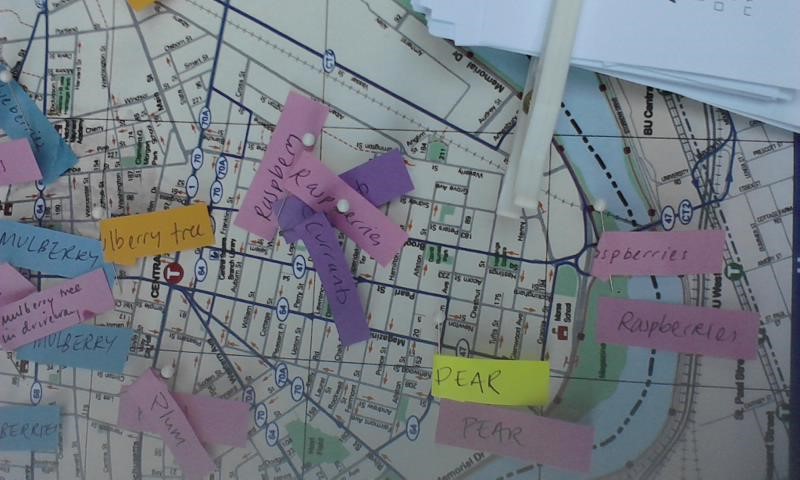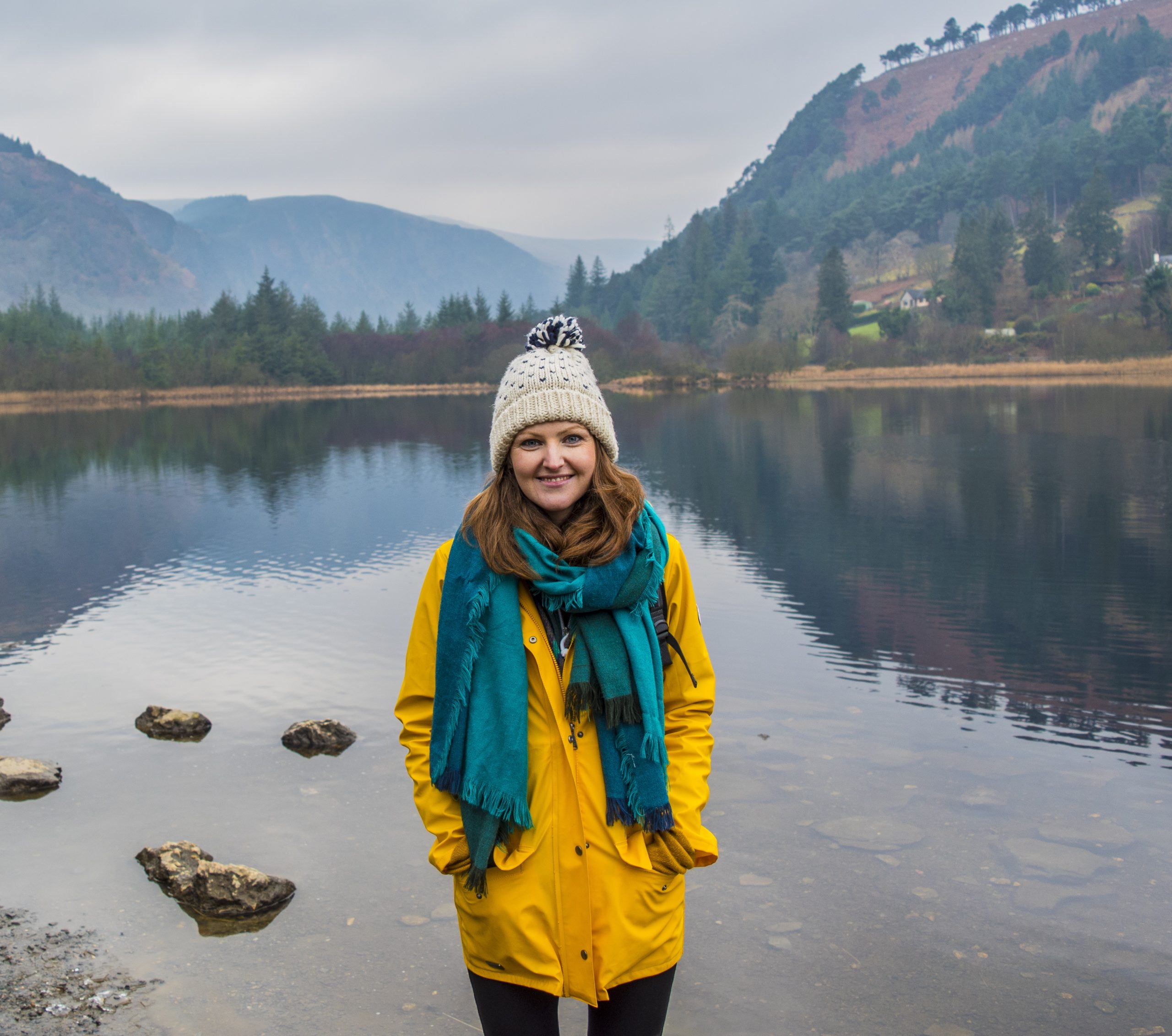Can community mapping facilitate food sharing?
Published by Oona Morrow on the 14th June 2016.

Mapping can be used to draw boundaries between what is mine and what is yours, what is public and private, what is individual and what is shared. Maps are productive fictions; they can do more than reflect reality, urban landscapes, and the locations of fruit trees. They can also help produce new realities by making new worlds, resources, and realities visible and accessible. Community mapping can create a space for renegotiating the boundaries between public and private property – for making private spaces, knowledge, resources, and food public and shared.
Fruit is a surprisingly abundant and underutilized resource in cities. Forgotten apple orchards, feral mulberry trees, inherited grape arbors, wild raspberry and blackberry brambles, peach and plum trees – are just some of the fruits I have harvested and tasted – in private backyards, on public rights of way, and at the edges of fences and sidewalks. These fruits are often overlooked by the untrained eye but always within reach.
Several food sharing enterprises are using community mapping to make urban fruit more visible and accessible, even enticing private property owners to share some of their bounty. In Greater Boston the League of Urban Canners, a group of friends and neighbors harvests, preserves, and prunes backyard fruit trees and arbors at more than 300 sites. They collected these sites through word of mouth, by scouting out fruit trees and knocking on doors, and by inviting the public to share their knowledge of urban fruit at community fruit mapping events. Sharing jam, push pins, and sticky notes, they invited folks to plot their favorite foraging sites, their neighbors peach tree, and even their home address on cork mounted paper maps of Cambridge and Somerville. The sites were used to create a (private) searchable database and google map for harvesting by the League of Urban Canners.
In LA and in cities around the wold Fallen Fruit, an artist collective, has created beautiful maps of publicly accessible fruit inviting contributors to “collectively re-imagine the function of public participation and urban space, and to explore the meaning of community through creating and sharing new and abundant resources.” The collective also hosts public fruit jams and has been at the forefront of the urban orchard movement.
Another US based outfit Falling Fruit has created a global searchable database and interactive map of public fruit. Their crowd sourced online map seeks “to unite the efforts of foragers, foresters, and freegans everywhere. The imported datasets range from small neighborhood foraging maps to vast professionally-compiled tree inventories. This so far amounts to 1,664 different types of edibles (most, but not all, plant species) distributed over 1,181,273 locations.”
In Seattle, City Fruit has created an interactive fruit mapping tool to help “build community, steward urban orchards, share harvests, and help policymakers.” However, the disclaimer on their mapping tool that “the trees listed here are not for public harvesting as many of them are on private property,” is an important reminder that online maps alone are not sufficient to facilitate food sharing in cities. Community mapping is a starting point, it allows us to glimpse a possible future of abundant and shared fruit. But, as I have learned through my work with the League of Urban Canners, it is relationships – that are built on trust and reciprocity, as well as shared knowledge, skills, meals, and resources that allows food sharing to occur. The League of Urban Canners goes to great lengths to maintain trusting relationships between property owners, harvesters, and preservers – signing liability waivers, sharing the preserved jams with owners, returning in the winter to prune trees and arbors, and inviting owners, harvesters, and preservers to share their bounty at potluck dinners.
These are just a few examples, there are hundreds more all over the world – many of which are listed on Falling Fruit’s Sharing Resources page. If you’d like to create your own community fruit map grab a bike, a friend, a notepad, a map, and meet your neighbors.
© 2015 - 2024 ShareCity | Web Design Agency Webbiz.ie








